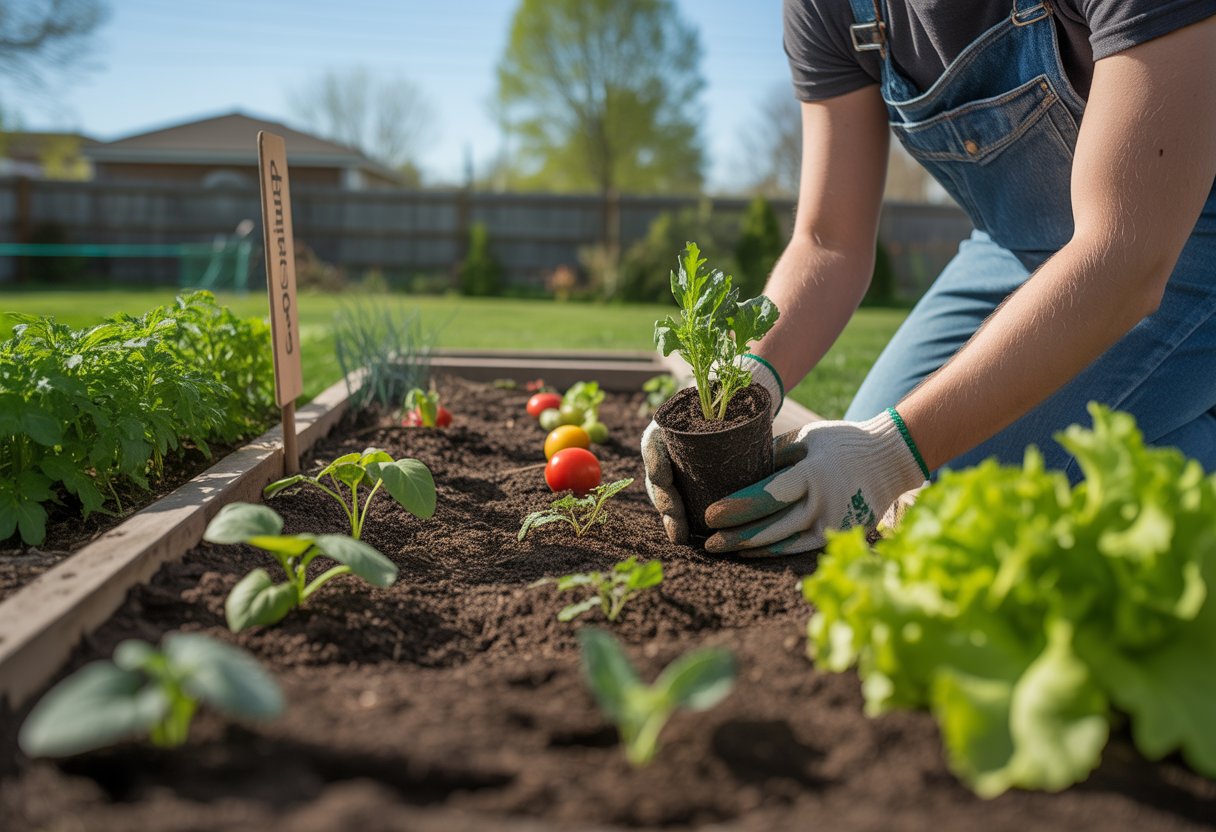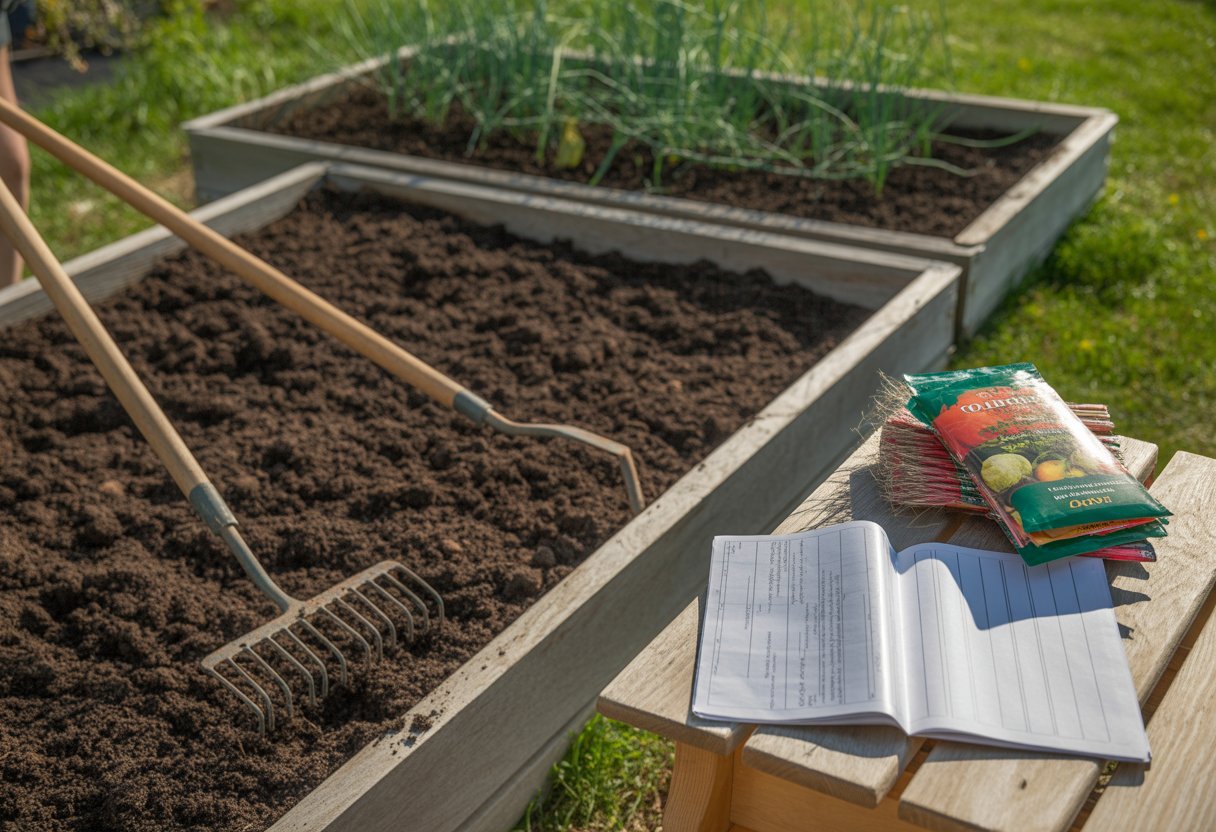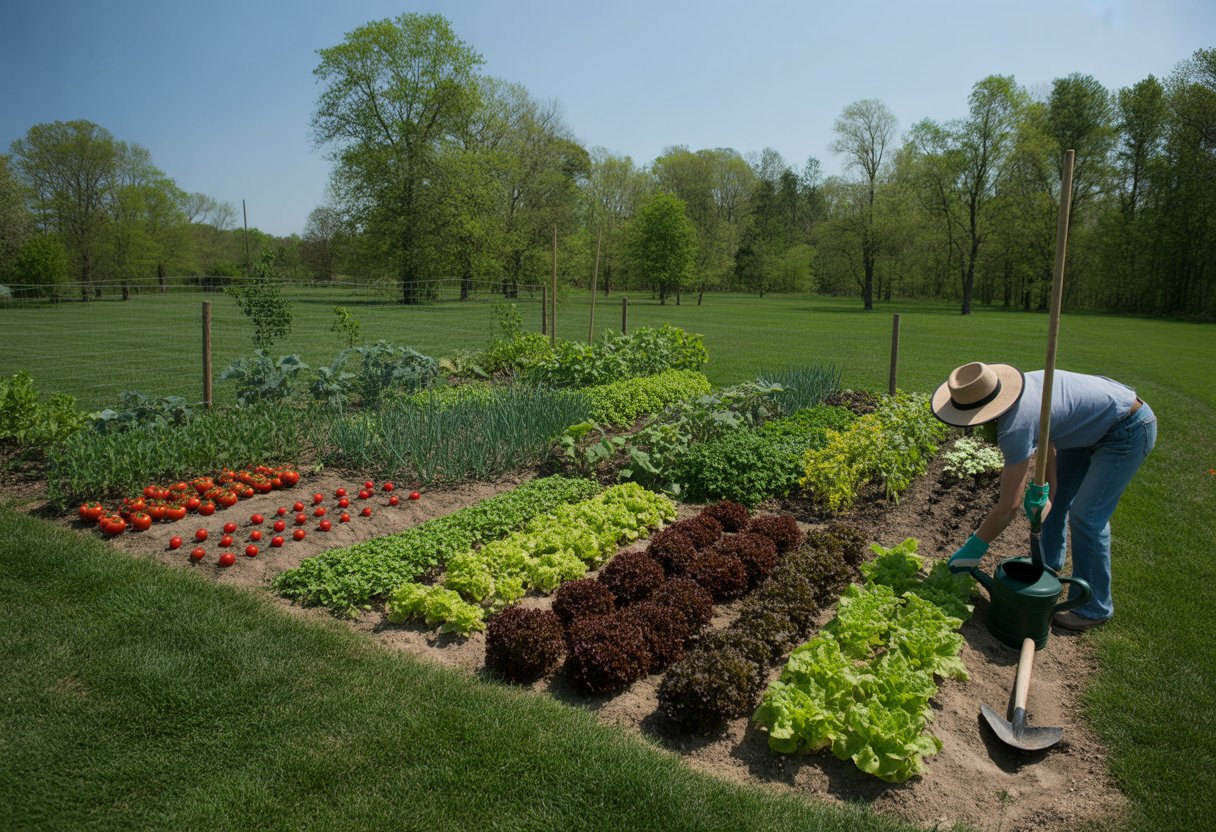Vegetable Planting Guide Missouri: Essential Tips for Successful Growing Seasons
Vegetable gardening in Missouri means getting familiar with the state’s climate and growing season if you want decent results. The best planting time shifts by vegetable, but most fall between mid-April and early June, depending on those unpredictable frost dates.
Knowing when to start seeds or transplant seedlings really sets you up for better growth and bigger yields.

If you want a productive garden, you’ll need to get the hang of soil preparation, sun exposure, and water needs. Following some basic tips for tomatoes, peppers, beans, and leafy greens usually pays off.
Let’s get into the essentials and help you avoid the most common mistakes.
Understanding Missouri’s Planting Zones
Missouri gardeners really need to pay attention to the local climate for successful planting. The state sits in the Lower Midwest, so its growing conditions line up with certain USDA hardiness zones.
Those zones shape your planting schedule and what crops will actually work.
Identifying Your Hardiness Zone
Most of Missouri falls into USDA hardiness zones 5b to 6a. If you’re in zone 5b, winters dip to -15 to -10°F, while 6a is a little milder at -10 to -5°F.
Find your exact zone using the USDA Plant Hardiness Zone Map—just plug in your zip code. This little detail matters because it tells you when you can start seeds indoors or move them outside.
If you’re in a cooler zone, you’ll want to wait a bit longer to avoid losing plants to frost.
Seasonal Considerations for the Lower Midwest
Missouri’s growing season usually runs from late April or early May through September. Spring frost dates bounce around, but most places see them from mid-April to early May.
Up north, fall frost can sneak in as soon as late September.
You’re looking at a frost-free window of about 140 to 160 days depending on where you live. That window limits how many crops you can get to maturity outdoors.
Tomatoes and peppers—those heat lovers—should wait until after the last frost.
Spring freezes and chilly soil can throw off seed starting. Cold-hardy crops like spinach and peas can go in earlier, but summer crops need steady warmth before they’ll thrive.
Vegetable Planting Calendar for Missouri
Timing’s everything in Missouri’s growing season. Watching the calendar and the weather makes a big difference.
Each vegetable has its own schedule, so if you want a good harvest, you’ll need to plan ahead.
Spring Vegetable Planting Guide
Spring planting kicks off after the last frost date—usually late March to mid-April, depending on your region. Cool-season crops like lettuce, spinach, peas, and radishes can go in 4-6 weeks before that last frost.
Hold off on warm-season crops like tomatoes, peppers, and beans until the soil’s warm, which is usually mid to late May. If you start seeds indoors 6-8 weeks before transplanting, you’ll get a head start.
A planting calendar is honestly your best friend here. For example, if you get kale and broccoli in early, you’ll have them ready for late spring or early summer.
Summer Vegetable Planting Tips
Summer in Missouri can be brutal—think heat, drought, and the occasional downpour. Focus on heat-tolerant crops like okra, sweet potatoes, and cucumbers.
If you want bush beans or summer squash, plant them in late June or early July so you beat the first frost. Try succession planting every few weeks to keep the veggies coming.
Shade and mulch help shield your plants from the worst of the heat. Don’t forget to check the soil moisture, since things can dry out fast.
Fall and Winter Planting Recommendations
Fall planting starts in late August and can stretch into early October. Root crops like carrots, turnips, and beets do well if you want a late fall harvest.
Cool-season greens—kale, collards, Swiss chard—can handle some frost and keep going after the weather turns. Plant these in late summer for a steady supply into the cold months.
If you’re thinking long-term, toss in some winter cover crops like clover or rye to boost your soil. Row covers can help delicate crops hang on a bit longer into winter.
Soil Preparation and Garden Planning

Getting the soil right and planning your layout really matter in Missouri. You’ll want nutrient-rich soil, a good garden spot, and a strategy for planting that keeps pests at bay.
Building Healthy Soil with Compost
Compost does wonders for Missouri’s sometimes tricky soil. Mixing in well-rotted compost boosts structure, moisture retention, and nutrients.
Aim for 2-3 inches of compost blended into the top 6-8 inches of soil before planting. This supports root growth and keeps the soil teeming with helpful microbes.
You can make compost from yard waste, kitchen scraps, and manure—it’s cheap and sustainable. Just skip the fresh manure, since it can burn plants or bring in unwanted pathogens.
Add compost regularly, especially in early spring, and you’ll see your soil improve over time.
Choosing the Right Location
Vegetables need 6 to 8 hours of direct sunlight each day. Missouri’s weather makes sun, drainage, and wind protection pretty important.
Steer clear of low spots where water pools—roots hate sitting in soggy ground. A gentle slope with plenty of light helps water drain off naturally.
Keeping your garden close to a water source makes regular watering easier.
Test your soil with Missouri Extension services if you’re unsure about nutrients or pH. Most veggies do best with a slightly acidic to neutral pH (6.0-7.0).
Companion Planting with Herbs and Flowers
Companion planting can boost growth and cut down on pests if you use the right combos. Herbs like basil, dill, and chives help keep bugs away and draw in pollinators.
Flowers like marigolds and nasturtiums protect against nematodes and keep pests like aphids in check. Planting these around your veggies acts like a natural shield and adds some color, too.
Group companion plants together, but don’t overcrowd. This approach means you’ll need fewer chemicals and your crops stay healthier.
Resources for Missouri Gardeners

Missouri gardeners have some great local resources. These can help with everything from planning and planting to troubleshooting pests or poor soil.
Guidance from University of Missouri Extension
The University of Missouri Extension is a goldmine for gardeners. Their website has planting calendars tailored to Missouri, pest and disease tips, and soil testing info.
They run workshops and put out guides on vegetable varieties that actually do well here. You can reach out to your local extension office for advice on timing, fertilizing, and crop rotation.
Their fact sheets break down tricky topics like watering and organic pest control into steps anyone can follow.
Recommended Fruits for Home Gardens
Missouri’s climate works surprisingly well for a bunch of fruits that do great in home gardens. You’ve got options like strawberries, blackberries, apples, peaches, and grapes.
Strawberries and blackberries seem to handle Missouri’s growing conditions with almost no fuss. Just some basic pruning and mulching, and you’re set.
Apples and peaches need a bit more thought. You really want a spot with good sunlight and airflow, since that helps keep diseases at bay.
Grapes love having support structures and do best when you prune them regularly. Picking disease-resistant varieties, especially for apples and peaches, can make a big difference—Missouri’s humidity can be a pain for those.


